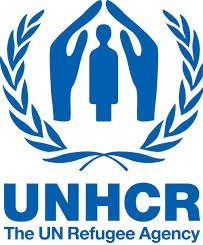GENEVA – Forced displacement surged to historic new levels across the globe last year and this, according to the 2024 flagship Global Trends Report from UNHCR, the UN Refugee Agency.
The rise in overall forced displacement – to 120 million by May 2024 – was the 12th consecutive annual increase and reflects both new and mutating conflicts and a failure to resolve long-standing crises. The figure would make the global displaced population equivalent to the 12th largest country in the world, around the size of Japan’s.
A key factor driving the figures higher has been the devastating conflict in Sudan: at the end of 2023, 10.8 million Sudanese remained uprooted. In the Democratic Republic of the Congo and Myanmar, millions were internally displaced last year by vicious fighting. UNRWA estimates that by the end of last year, up to 1.7 million people (75 per cent of the population) had been displaced in the Gaza Strip by the catastrophic violence, most of whom were Palestine refugees. Syria remains the world’s largest displacement crisis, with 13.8 million forcibly displaced in and outside the country.
“Behind these stark and rising numbers lie countless human tragedies. That suffering must galvanize the international community to act urgently to tackle the root causes of forced displacement,” said Filippo Grandi, the UN High Commissioner for Refugees. “It is high time for warring parties to respect the basic laws of war and international law. The fact is that without better cooperation and concerted efforts to address conflict, human rights violations and the climate crisis, displacement figures will keep rising, bringing fresh misery and costly humanitarian responses.”
The largest increase in displacement figures came from people fleeing conflict who remain in their own country, rising to 68.3 million people according to the Internal Displacement Monitoring Centre – up almost 50 per cent over five years.
The number of refugees, and others in need of international protection, climbed to 43.4 million when including those under UNHCR and UNRWA’s mandates. The vast majority of refugees are hosted in countries neighbouring their own, with 75 per cent residing in low- and middle-income countries that together produce less than 20 per cent of the world’s income.
The report showed that worldwide, more than 5 million internally displaced people and 1 million refugees returned home in 2023. These figures show some progress towards longer-term solutions. Positively, resettlement arrivals increased to almost 160,000 in 2023.
“Refugees – and the communities hosting them – need solidarity and a helping hand. They can and do contribute to societies when they are included,” Grandi added. “Equally, last year millions of people returned home, representing an important glimmer of hope. Solutions are out there – we’ve seen countries like Kenya lead the way in refugee inclusion – but it takes real commitment.”
The report also offered new analysis on the climate crisis and how it increasingly and disproportionately affects forcibly displaced people.
Given the immense challenges facing 120 million forcibly displaced people outlined in the Global Trends report, UNHCR remains steadfast in its commitment to delivering new approaches and solutions to help people forced to flee their homes, wherever they are.
Source: UNHCR


Leave a Reply